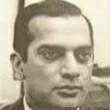
1908 - 1957
John Boysie Singh
Summary
Name:
John Boysie SinghNickname:
The Raja / BoysieYears Active:
1947 - 1956Birth:
April 05, 1908Status:
ExecutedClass:
Serial KillerVictims:
400+Method:
Shooting / Drowning / StabbingDeath:
August 20, 1957Nationality:
Trinidad and Tobago
1908 - 1957
John Boysie Singh
Summary: Serial Killer
Name:
John Boysie SinghNickname:
The Raja / BoysieStatus:
ExecutedVictims:
400+Method:
Shooting / Drowning / StabbingNationality:
Trinidad and TobagoBirth:
April 05, 1908Death:
August 20, 1957Years Active:
1947 - 1956bio
John Boysie Singh was born on April 5, 1908, at 17 Luis Street, Woodbrook, Port of Spain, in what was then British Trinidad and Tobago. He was the son of Bhagrang Singh, a fugitive from Punjab, British India, who had immigrated to Trinidad, and his Trinidadian wife. Growing up in a working-class neighborhood in colonial Port of Spain, Boysie was exposed early to the criminal underworld and the socioeconomic struggles of Trinidad’s urban poor. His upbringing was marked by poverty and instability, which likely influenced his later involvement in crime.
Boysie developed a reputation as a streetwise hustler and gambler from a young age. By his teenage years, he was already deeply involved in petty crime and was known to local law enforcement. His first significant brush with the law came when he was charged with breaking and entering, a case that nearly resulted in his deportation due to his father’s fugitive background. However, he managed to beat the charge and avoided deportation, a pattern that would repeat throughout his life as he skillfully navigated the colonial justice system.
By the 1930s and 1940s, Singh had become a well-known figure in Port of Spain’s criminal circles. He was charismatic, flamboyant, and unashamedly public about his lifestyle. Known for wearing bright, expensive clothes and parading confidently through the city streets, Boysie earned both fear and respect. His name became so infamous that parents across Trinidad would invoke it to frighten misbehaving children: “Behave yourself, man, or Boysie goyn get allyuh!” By the mid-20th century, he had established himself not only as a leading figure in organized crime but also as a symbol of terror in Trinidadian society.
murder story
By 1947, Boysie Singh had expanded his criminal empire beyond gambling and extortion into a far deadlier enterprise: piracy and mass murder. Along with his gang, Singh began targeting people seeking illegal passage between Trinidad and Tobago and Venezuela, a common route used by migrants and traders. He would offer to ferry them across the sea for a fee, but once the vessels were out of sight of land, the gang would rob the passengers at gunpoint, murder them, and dump their bodies overboard. This brutal scheme continued for nearly a decade, from 1947 to 1956, and is believed to have resulted in the deaths of approximately 400 people. Most of the victims disappeared without a trace, and because the killings occurred at sea, evidence was scarce and prosecutions were almost impossible.
During this period, Boysie maintained his public persona as a feared and untouchable crime boss. Despite his notoriety and frequent arrests, he consistently avoided conviction due to lack of evidence, witness intimidation, and legal technicalities. He was arrested multiple times, including for breaking and entering and other lesser offenses, but managed to evade serious charges for years.
His reign of terror eventually ended not because of his maritime murders but due to a domestic homicide. In 1956, Boysie was charged with the murder of his niece, Hattie Werk, a dancer. Unlike his previous crimes, this case had witnesses and strong physical evidence, and prosecutors were determined to ensure a conviction. He was found guilty of murder in 1957, and his appeal was rejected.
On August 20, 1957, John Boysie Singh was executed by hanging in Port of Spain, bringing an end to one of the most notorious criminal careers in Caribbean history. At the time of his death, he was both reviled as a mass murderer and mythologized as a near-legendary figure in Trinidadian folklore.